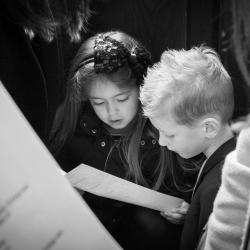
Hervormde Kerk
Earnewâld, NL
Reformed Church and tower, situated on a churchyard. Simple village church from 1774. The church contains a richly carved pulpit with a rear bulkhead and sounding board from 1699. The organ was made in 1874 by L. van Dam and Sons. It has a bell tower with a bell by G. van Wou, from the 1500s. The mechanical tower clock was made by Gebr. van Bergen in 1918.





